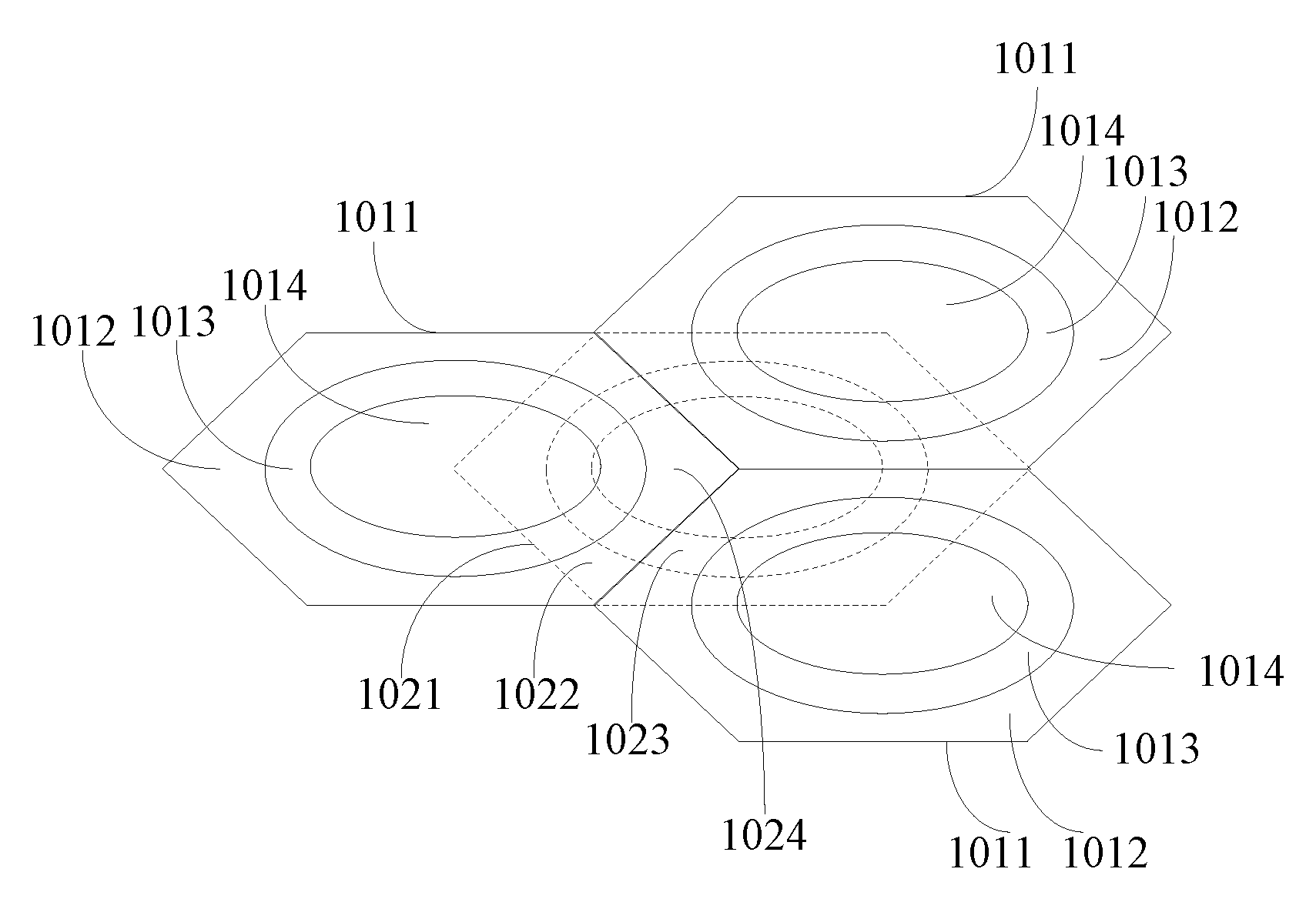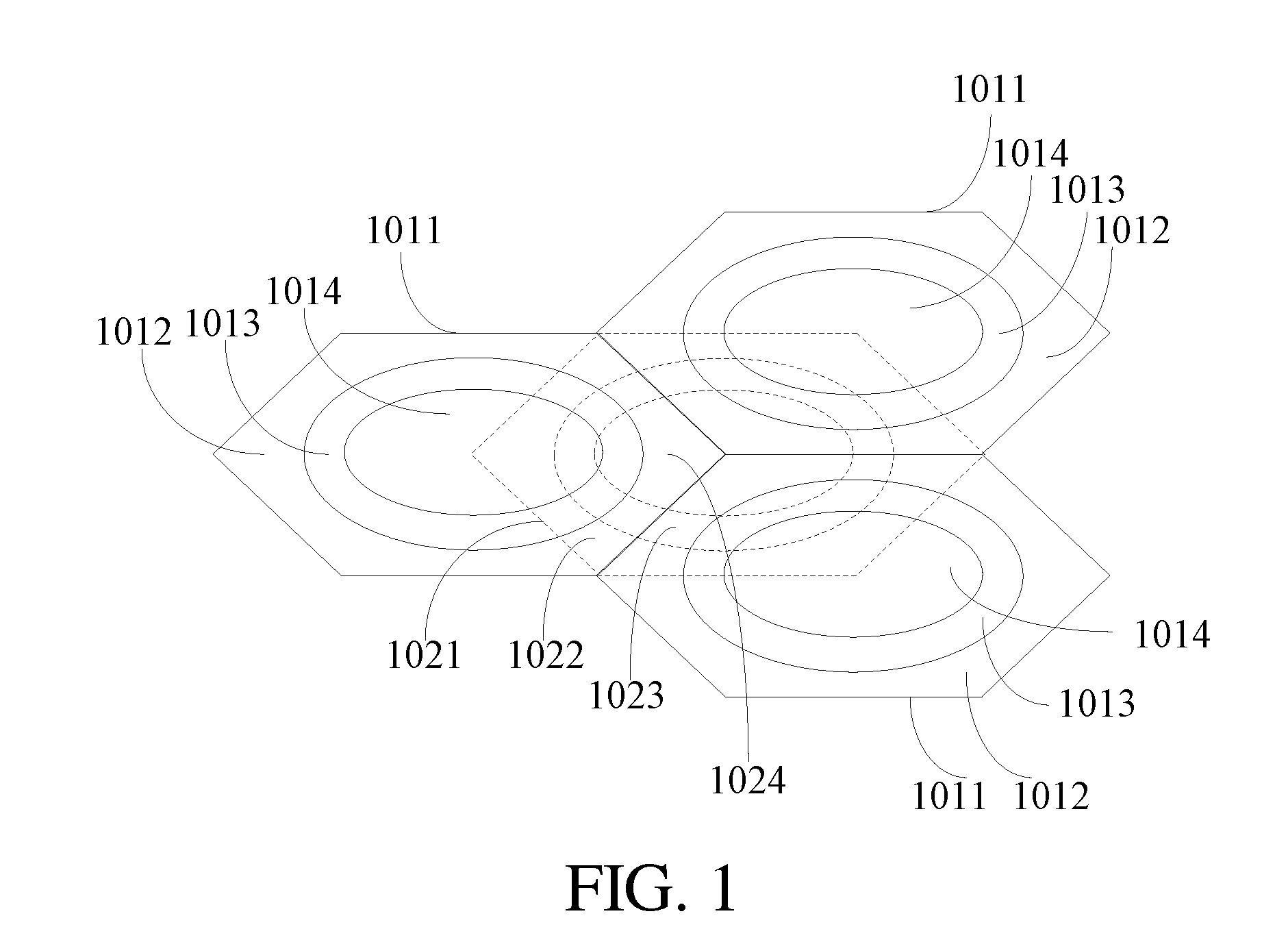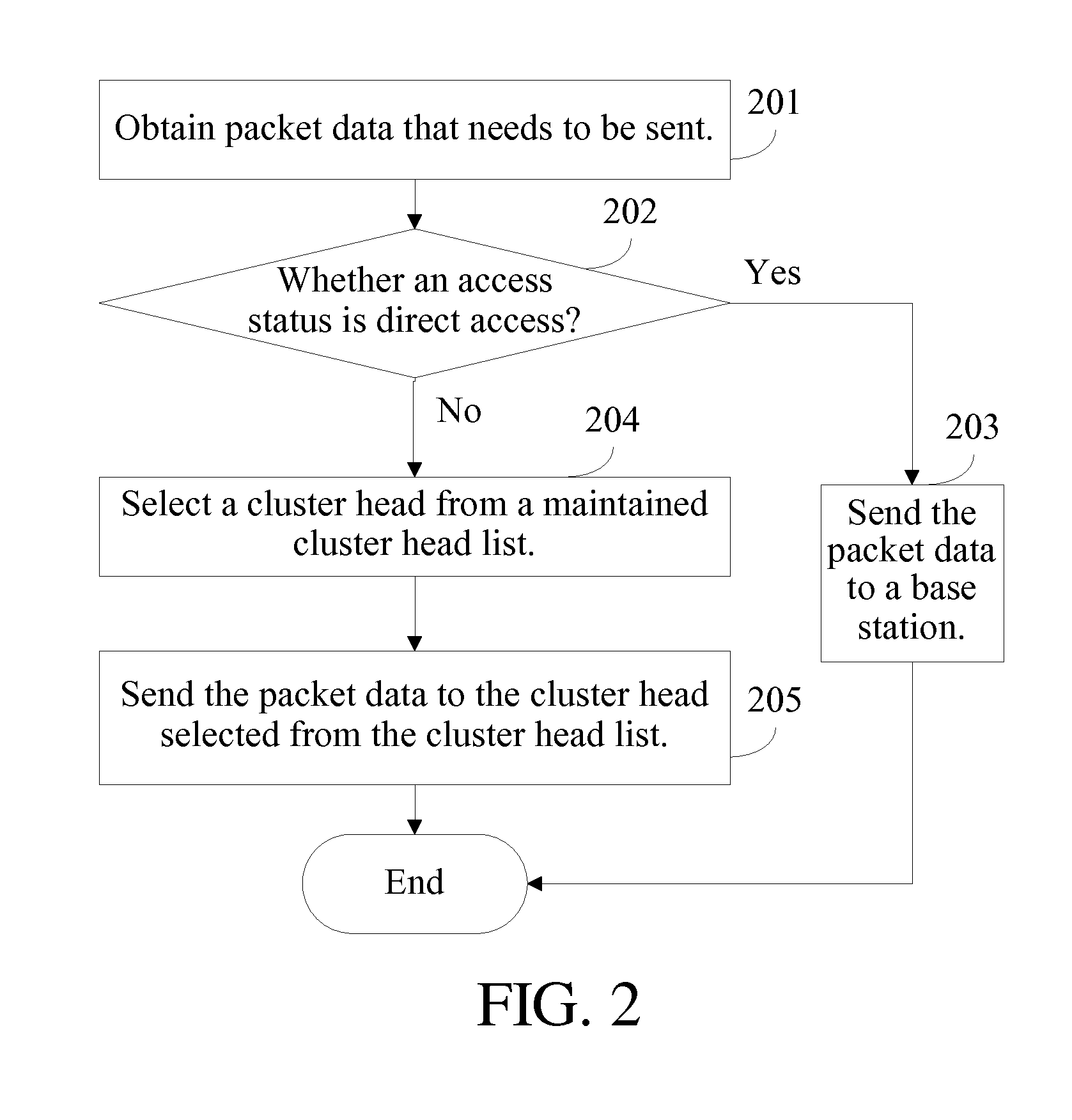Method for sending packet data, base station, and mobile station
a packet data and mobile station technology, applied in the field of communication technology, can solve the problems of large resource overhead of the bs and high communication complexity, and achieve the effect of reducing the resource overhead of the bs and reducing the communication complexity
- Summary
- Abstract
- Description
- Claims
- Application Information
AI Technical Summary
Benefits of technology
Problems solved by technology
Method used
Image
Examples
first embodiment
[0074]The method for sending packet data according to an embodiment of the present invention is illustrated in the following. FIG. 2 shows a process of the method for sending packet data according to the In this embodiment, a processing process of a source MS is illustrated, which includes the following steps.
[0075]In step 201, packet data that needs to be sent is obtained.
[0076]In step 202, it is determined whether an access status is direct access; if yes, the process turns to step 203; and otherwise, the process turns to step 204.
[0077]Different access modes are used for different access statuses of the MS. In an embodiment of the present invention, default packet-data sending mechanisms for the MS in different access statuses are as shown in Table 5.
TABLE 5MS statusDefault Packet-data Sending MechanismDirectThe packet data is sent to a BS directly and the BSAccessis in charge of forwarding the packet data. A cellinterface is used. If a user requires use of anadhoc mode, a relay...
second embodiment
[0088]FIG. 3 shows a process of a method for sending packet data according to a In this embodiment, a processing process of a source MS is illustrated, which includes the following steps.
[0089]In step 301, packet data that needs to be sent is obtained.
[0090]In step 302, it is determined whether an access status is direct access; if yes, the process turns to step 303; and otherwise, the process turns to step 304.
[0091]In step 303, the packet data is sent to the BS and the process is ended.
[0092]In step 304, it is determined whether a type of a service corresponding to the packet data is a cell access service; if yes, the process turns to step 305; and otherwise, the process turns to step 306.
[0093]As the source MS has an adhoc and cell interface, the source MS can realize cell access and adhoc communication inside a virtual cluster at the same time. The source MS can categorize the services into two major types, namely, cell access services and adhoc services, so that two packet buf...
third embodiment
[0098]FIG. 4 shows a process of a method for sending packet data according to a In this embodiment, a processing process of a cluster head is illustrated, which includes the following steps.
[0099]In step 401, packet data from a source MS is received. The packet data includes an identity of a destination MS.
[0100]In step 402, a routing cache table is searched for a path to the destination MS. If the path to the destination MS is found, the process turns to step 403; if the path to the destination MS is not found, the process turns to step 404.
[0101]In an embodiment of the present invention, a routing cache table maintained by a cluster head is as shown in Table 6.
TABLE 6Destination MSNext HopMetricLifetimeMS 11MS 5 210 msMS 12MS 12110 ms. . .. . .. . .. . .
[0102]In step 403, an interface is selected, the packet data is forwarded through the selected interface according to the found path, and the process is ended.
[0103]When the interface is selected, resource information of a cell in...
PUM
 Login to View More
Login to View More Abstract
Description
Claims
Application Information
 Login to View More
Login to View More - R&D
- Intellectual Property
- Life Sciences
- Materials
- Tech Scout
- Unparalleled Data Quality
- Higher Quality Content
- 60% Fewer Hallucinations
Browse by: Latest US Patents, China's latest patents, Technical Efficacy Thesaurus, Application Domain, Technology Topic, Popular Technical Reports.
© 2025 PatSnap. All rights reserved.Legal|Privacy policy|Modern Slavery Act Transparency Statement|Sitemap|About US| Contact US: help@patsnap.com



